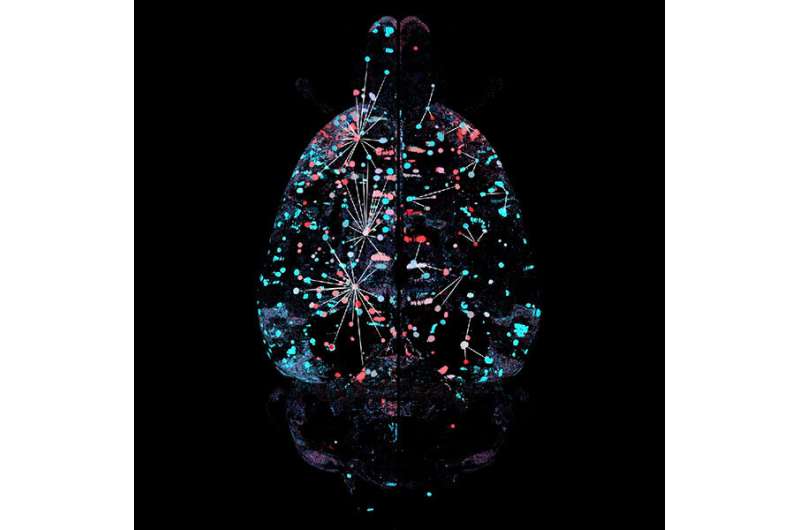
Addictive psychostimulants, from nicotine in cigarettes to illicit drugs like methamphetamine and cocaine, affect different regions of the brain. The same is believed true during withdrawal; finding a common brain pathway has proved elusive.
In a new paper, publishing September 27, 2021 in the journal eNeuro, a multi-institution team of researchers describe how withdrawal from nicotine, methamphetamine and cocaine altered the functional architecture and patterns in the brains of mice, compared to control animals.
They found that each drug produced a unique pattern of activity in the brain, but that mouse brains in withdrawal shared similar features. Perhaps more notably, the researchers said all psychostimulants shared a common link: Reduced modularity.
“All brains are organized into semiautonomous groups of neurons with specific functions, such as the cortex, amygdala and thalamus. Each region, however, is connected and interacts with other regions performing similar functions, creating a functional unit called a module,” said senior author Olivier George, Ph.D., professor in Department of Psychiatry at University of California San Diego School of Medicine. “Think of it as many different work stations, one station is in control of your mood, another takes care of your needs, and many other stations takes care of your goals, memories, motivations, sensation, et cetera. The brain needs many modules to take care of all of these processes at the same time.
“We found that in withdrawal, there was a dramatic decrease in the number of modules compared to control mice. It’s like the whole brain was dedicated to the effect of the lack of drugs, all of the work stations doing the same thing.”

That decreased modularity, the authors said, resulted in a complete restructuring of the brain networks. Reduced modularity has been shown in several brain disorders in humans, including traumatic brain injury and dementia. It may also be the common link between drugs of abuse.
To conduct their studies, the scientists implanted osmotic mini-pumps in mice that contained either nicotine, cocaine, methamphetamine or saline. The pumps remained in place for one week, with sufficient dosing and time to create a state of dependence. After the pumps were removed, the brains of mice were examined using single-cell whole-brain imaging at the peak of withdrawal symptoms, about eight to 12 hours post-pump removal.
“We found that cocaine, methamphetamine and nicotine withdrawal all produced a major shuffling of brain regions with major increases in functional connectivity throughout the brain compared to control (saline) mice,” said George, “with a decrease in modular structuring of the brain most strongly with methamphetamine and cocaine, then nicotine.”
The brains of methamphetamine and cocaine dependent mice were also very similar, consistent with their shared pharmacology, targeting the dopaminergic system.
This reduced modularity was associated with a shift of networks being controlled by the higher-level cortex to sub-cortical networks. The effect, said researchers, has been documented in humans after abstaining from alcohol dependence and in persons suffering from dementia and traumatic brain injury. Reduced modularity is associated with cognitive deficits and inflexible behavior which may explain the obsession and compulsion for the drug in people with substance use disorder.
George said the commonality of this kind of restructuring during withdrawal from psychostimulants helps explain why these drugs are so addictive. His team is currently using this approach to test experimental medications that may reverse and normalize brain network modularity.
More information: Characterization of the Brain Functional Architecture of Psychostimulant Withdrawal Using Single-Cell Whole Brain Imaging, eNeuro, DOI: 10.1523/ENEURO.0208-19.2021
Citation: Withdrawal from psychostimulants restructures functional architecture of brain (2021, September 27) retrieved 1 October 2021 from https://medicalxpress.com/news/2021-09-drug-morphs-brain-networks-mice.html
This document is subject to copyright. Apart from any fair dealing for the purpose of private study or research, no part may be reproduced without the written permission. The content is provided for information purposes only.
Note: This article have been indexed to our site. We do not claim ownership or copyright of any of the content above. To see the article at original source Click Here








